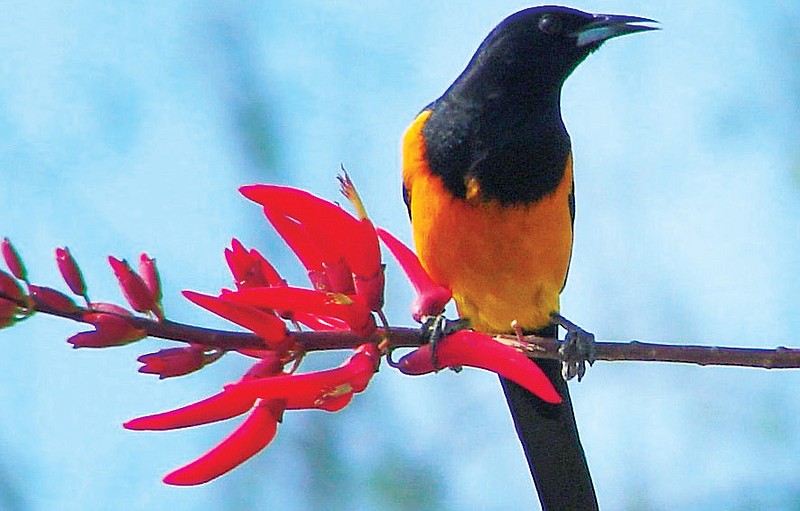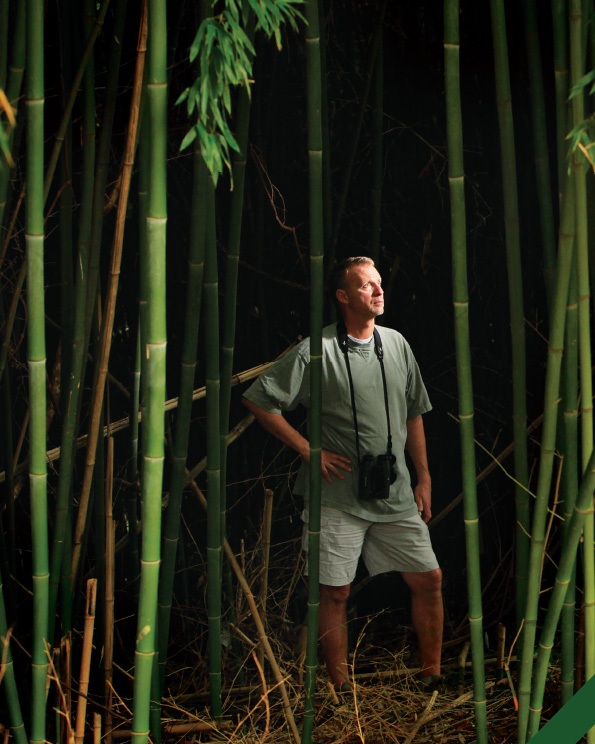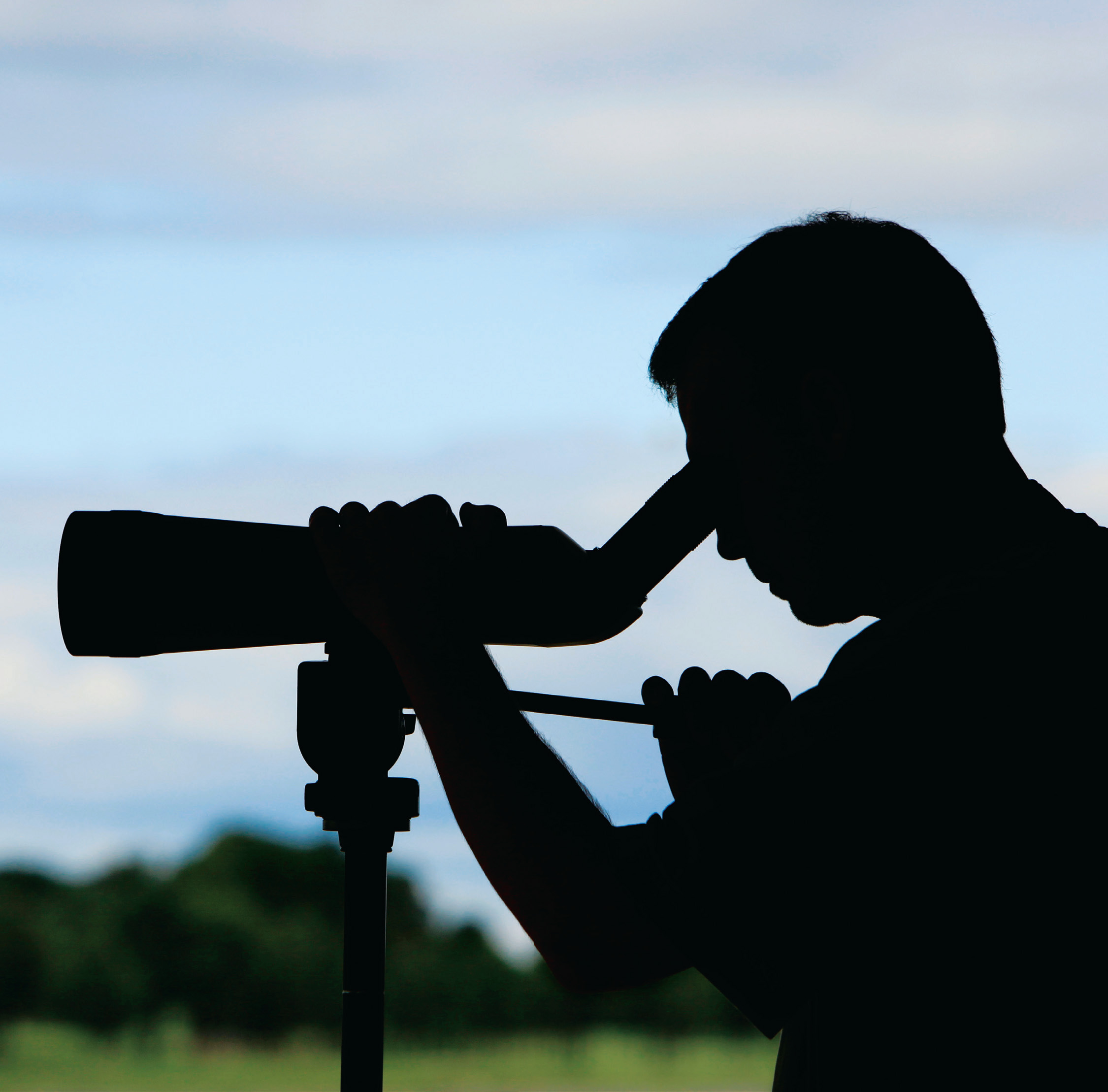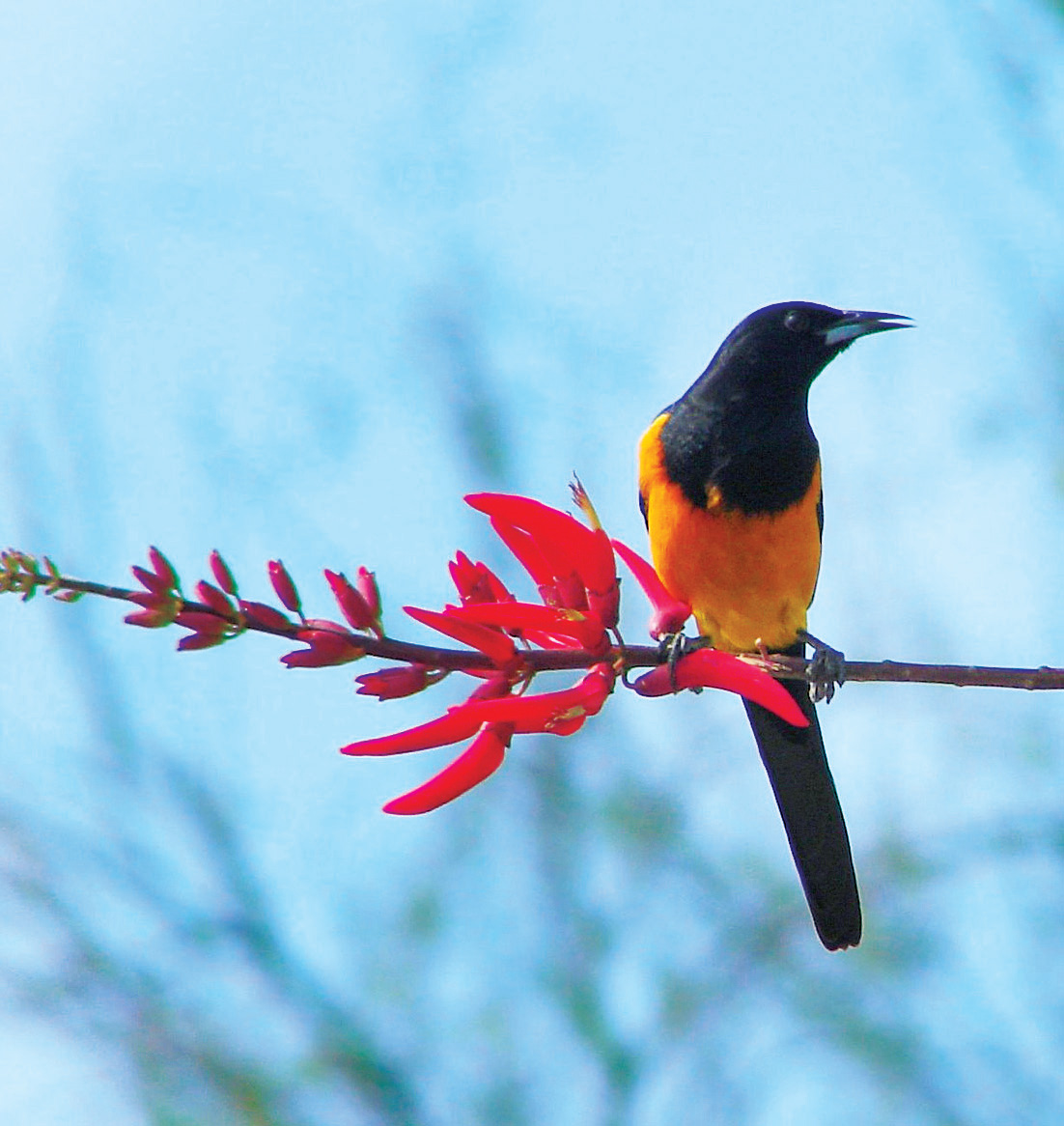The bird was 1,170 miles away. From Chattanooga , Kevin Calhoon would have to snake through Alabama, then Mississippi, then Louisiana and then drive to the very tip of the bottom of Texas if he wanted to find it. But he was going to find it, no matter what.
After work he started his mini van, the one he kept special for these kinds of trips, and headed South toward the Rio Grande River.
The Black-vented Oriole would be the 720th bird species he'd seen within the boundary of the lower 48 states, putting him one step closer to seeing all 886 species.
"When I get back to work, I don't tell people where I've been because they'll think I'm crazy," he says with a smile.
Diet Coke, 5-hour Energy drinks and adrenaline kept him from falling asleep on the 19-hour drive to Southeast Texas. He stopped just once to take a 30-minute nap in the back of his van at a rest area.
While driving alone through the night and the morning, he thought a lot about life, work and friends, but he thought a lot about the bird too. The Black-vented Oriole with its bright orange chest would be a rare find. There had been less than a dozen sightings in the United States, and all he needed was a picture.
He got word about the bird in his email from the North American Rare Bird Alert, an organization which culls information about uncommon sightings and packages it for mass dissemination to anxious birdwatchers, ready to drop everything for a chase. This bird was coming to the same tree at an RV park every day around 2 p.m., likely an accidental visitor from Mexico.
"In my mind, I was playing out what I was going to do," he says. "Am I going to the right place? Am I too late?" Word of a rare bird spotting can spread a fervorous excitement among birders like Calhoon, but hope can implode as quickly as a bird flutters away. He never knew what he would or wouldn't find at the end of his binoculars.
He prayed this wouldn't turn out like the time he drove to Texas to see the Bare-throated Tiger Heron. The last thing he wanted to do was come back to Chattanooga empty-handed.
For a smal but fanatic circle of birders in the Tennessee Valley, birdwatching is less about hummingbird feeders and backyard birdbaths and more about mustering up the willpower, cash and time to see as many birds as possible. Within the bird-watching community, they are called chasers. These are the people, like Calhoon, who have lost girlfriends because of their erratic pursuit of fowl and ended marriages because they wanted to spend too much time cozied up with their copy of "The Sibley Field Guide to Birds."
They are systematic and obsessive, keeping state lists, U.S. lists, region lists, world lists life lists and years lists. These are the people who will give up a year of their life to compete in a big year, jumping around the country to see who can spot the most North American species. Last year, a North Carolina man drove 65,900 miles and flew 81,900 miles to see 704 species, a record, in the lower 48 states in a single year.
They listen to recordings of songbirds on their iPods in their spare time and save thousands for international birding cruises, birding tours, last-minute flights and camera equipment. And some of the most die-hard birders, those climbing the competitive lists, live in Southeast Tennessee. Four area birders, including Calhoon, are named among the top 60 birders in the lower 48 states out of 589 who compete. And many of the same local birders are at the top of the most recently published American Birding Association area life list, which includes the lower 48 states, Alaska and Canada.
David Chaffin, a radiologist in Cleveland, ranks 22nd in the country for seeing 806 of 960 species. John Henderson, a retired Hixson chemist who has seen 756, Daniel Jacobson, a vice president at BlueCross BlueShield of Tennessee who's seen 754, and Clyde Blum, a Signal Mountain nurse who's seen 731, don't trail far behind. As the lists get longer, going the distance for a bird becomes paramount. Getting just a handful of new birds in a year can become a costly, and even dangerous feat. There are rumors that some birders working on their world lists were eaten by tigers or crocodiles while in hot pursuit of an exotic bird.
Every tick means an edge in the race. Calhon wishes he could have started the game earlier. He didn't get into birds until he was 25 years old and got a job cleaning birdcages at a local zoo after college.
One day, he said he picked up a wood duck and fell in love with its iridescent feathers. "I had never held a bird before," he says. "It looked hand-painted." He worked at the zoo for several years, and spent his time off searching out new birds, studying ornithology. Then in 1991, he saw an ad for a job at the Tennessee Aquarium. They were building a native songbird collection, and he wanted in.
Once in the city, he realized many of the local birders were more than ordinary hobbyists. The phenomenon of listing actually got some of its start in Collegedale with an anesthesiologist named Benton Basham. Basham, a birding celebrity who winters in Texas and catalogues butterflies, has one of the highest life lists in the country at more than 868 species.
In the 70s, Basham is credited with putting the American Birding Association on the map, and in 1983, Basham became the first birder to see more than 700 species in a calendar year, an accomplishment worshiped in an era without Internet.
He later helped establish NARBA and the code system for prioritizing North American birds. He and his protégés spread the gospel of listing and Calhoon was quickly in the mix.
"There aren't a lot of us," says Calhoon. "There are people who come and go and there are anti-listers that say it's a waste of time."
The dozen or so chasers shared excitement over NARBA notices and went on weeklong dusk-till-dawn excursions. By the time he was 49, Calhoon had seen 739 species on his life list and couldn't get enough.
"You got to understand, I love to travel, and birds take you places you've never been before," he says. "It's like collecting memories." He hasn't birded since boyhood so he'll never reach the heights of Basham, but he takes pride in what he knows about the birds he does find. The dirty secret of a lot of chasers is that while they can rack up an impressive list, they don't know much about them.
Pictures, instead of field notes, are mostly used to prove sightings now. And some piggyback on others' birding skills, relying on other birders or tours. "I like to do it myself," Calhoon says. "I like the hunt."
At the spot in Southeast Texas, where the Black-vented Oriole was last seen, Calhoon expected to find swarms of birders standing together, looking in tree limbs. Chasers could be overwhelming and tend toward obnoxious en masse and he never knew who would be in the crowd. On other long trips he had run into friends from other states. That was part of the excitement.
"It's like a wedding or a funeral," he says. "You don't know who will show up."
But only a few people were around and no one he knew. He looked at their faces. Birders typically wear disappointment on their sleeves, and people packing up equipment with grimaces was a bad sign.
The bird was expected to appear between 1:30 and 2 p.m., and he thought he had gotten there just in time for the short window. He saw an older woman and walked toward her. "Want to see that bird?" she asked. "Yes," he said, watching the trees. "Well he'll be here in 15 minutes," she explained.
And she was right. The little bird landed right in his sight, right on time on a flowering tree.
He took his camera, careful as he could be, and shot as many frames as he could. There wasn't time for much more. He had to work the next day. So a few hours later, he thanked the woman, got in his van and headed home. He made calls on his cell phone during the long drive back. "Guess what I saw?" he bragged.
Only 166 birds to go.



